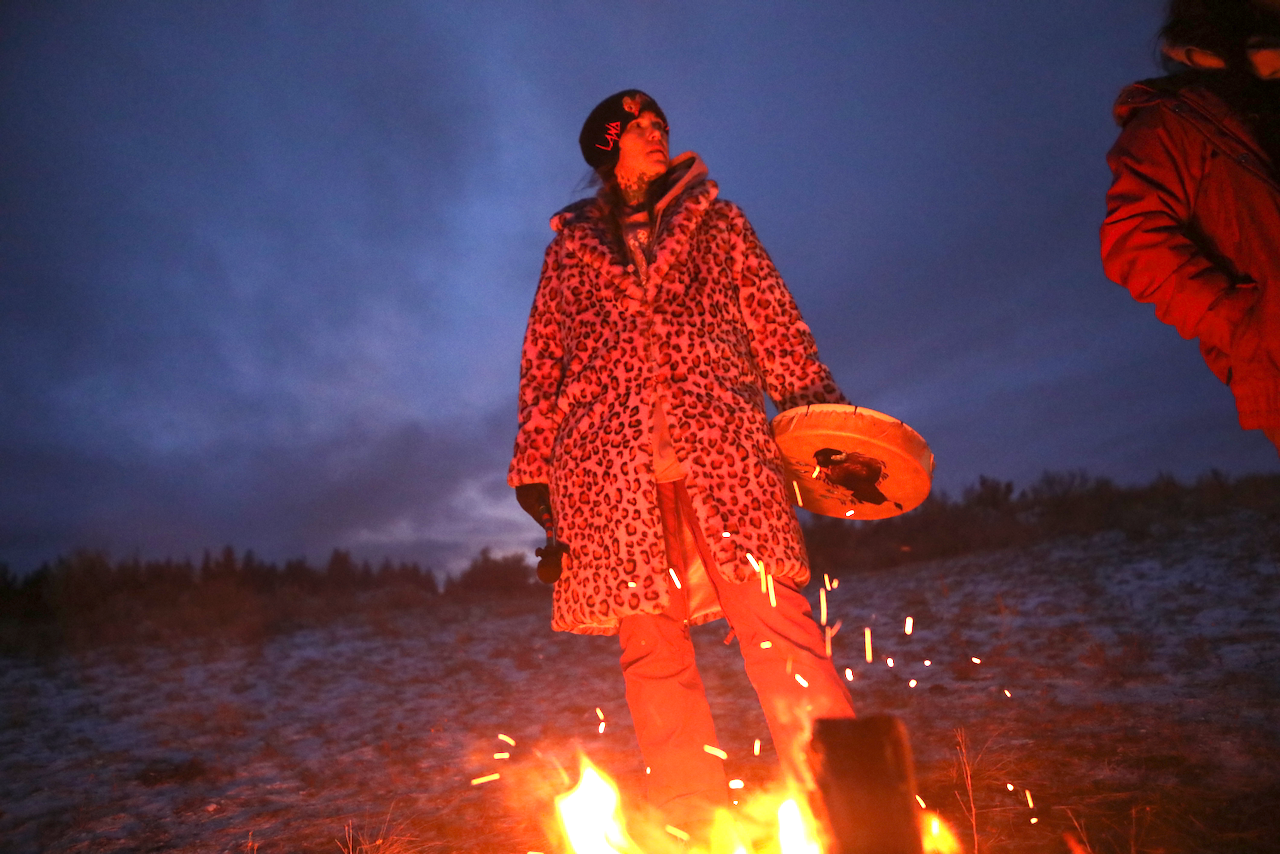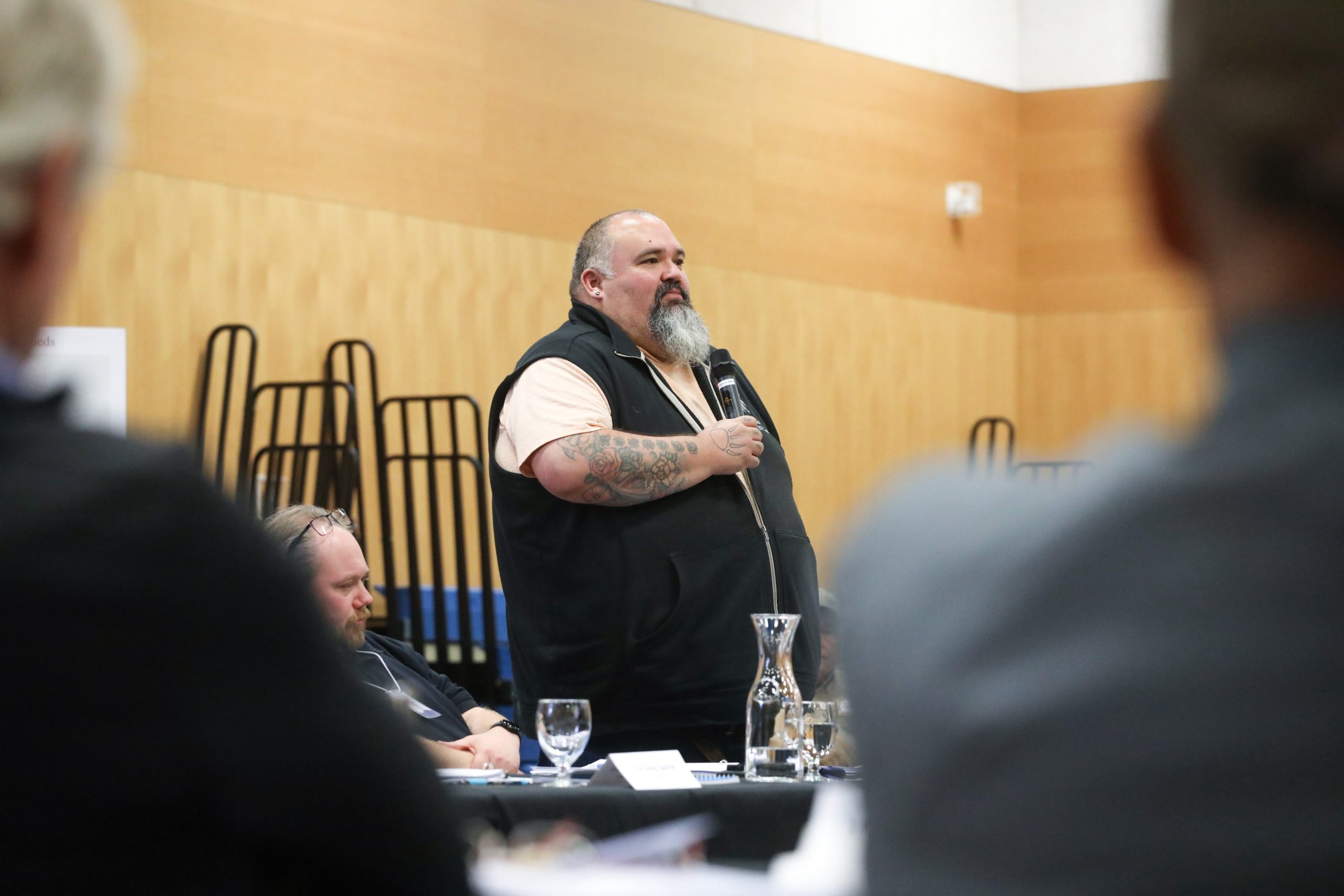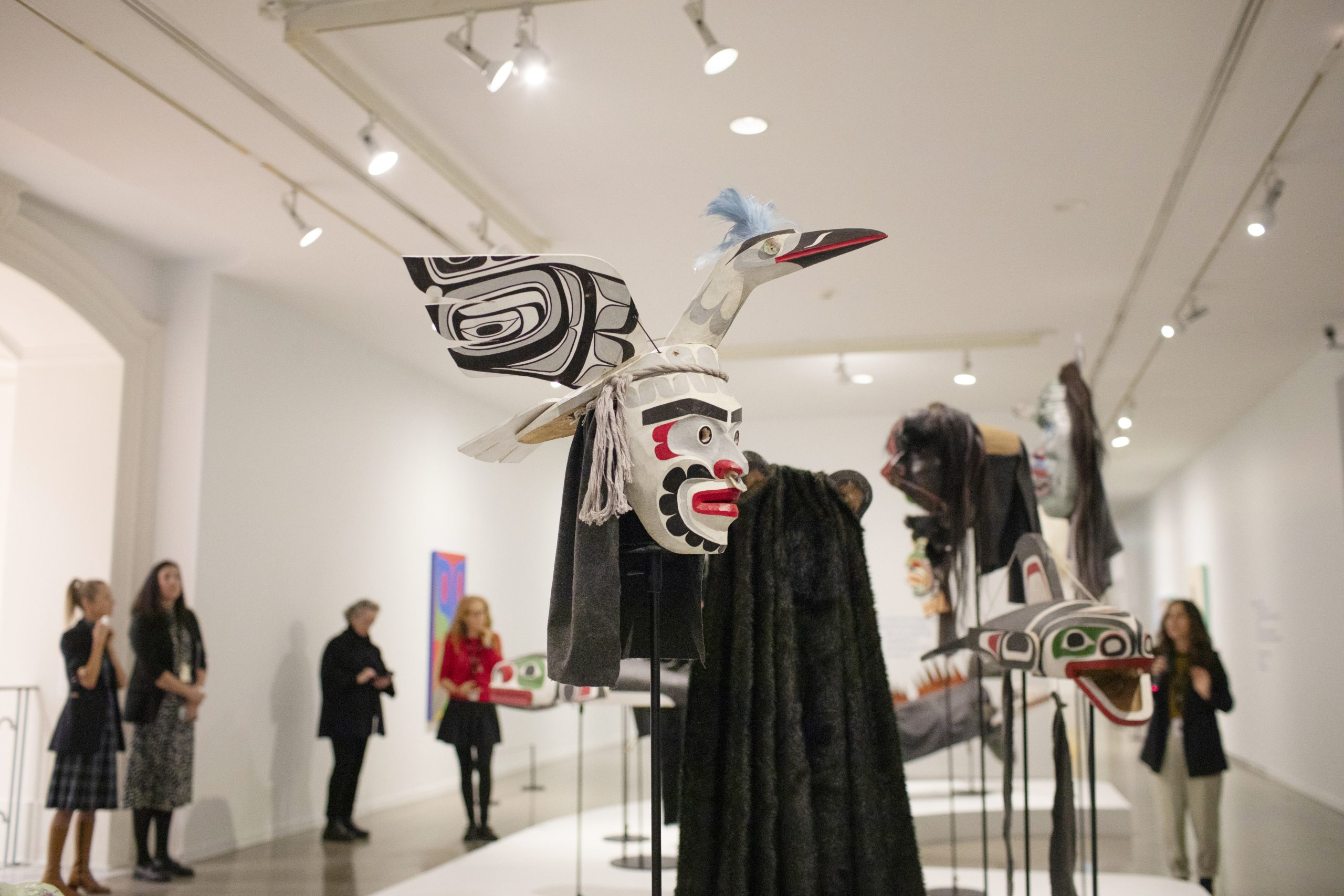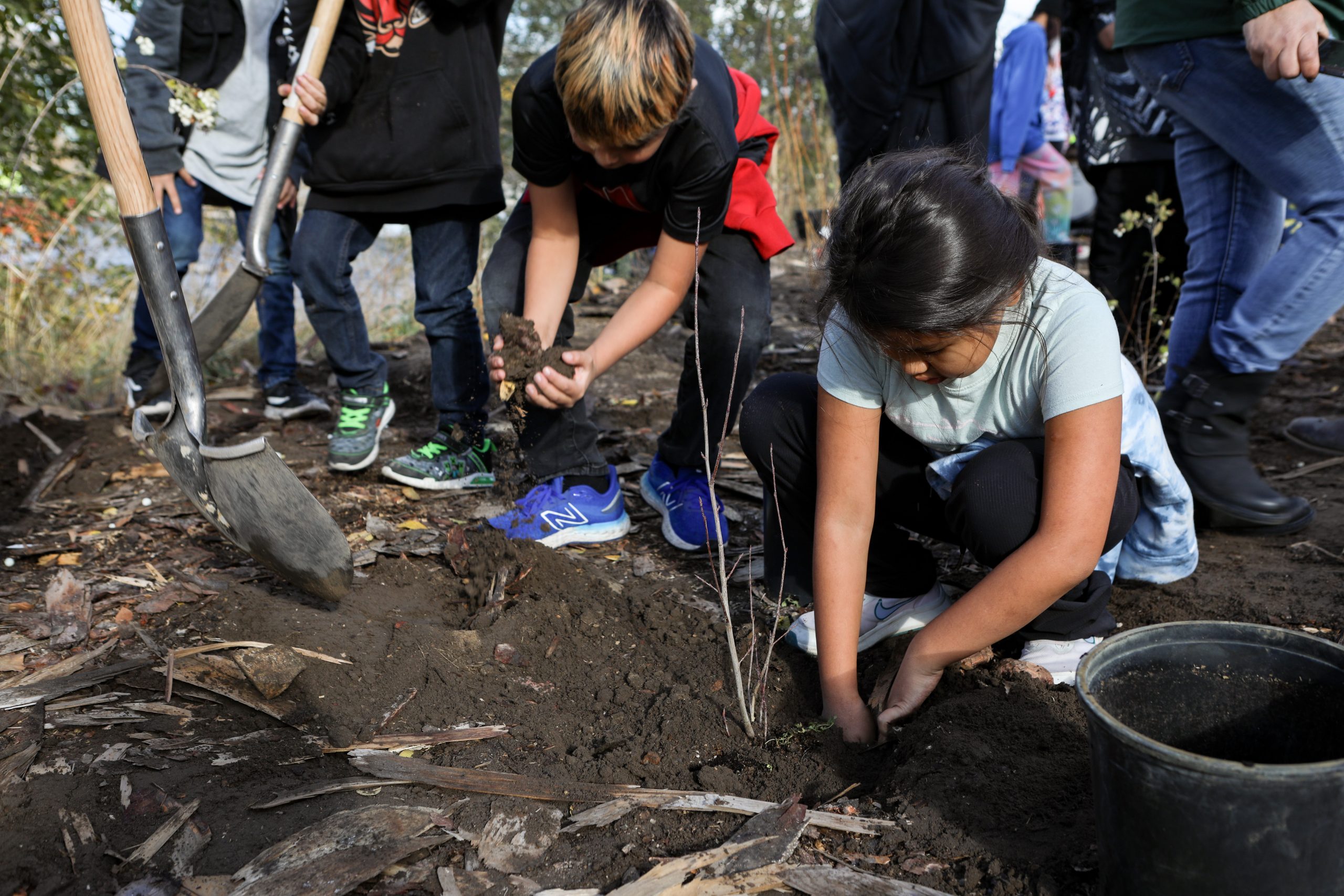True to Place exhibit features works rooted in tradition while expanding boundaries
The display curated by Carrielynn Victor highlights contemporary art that utilizes historic principles of form, story and place
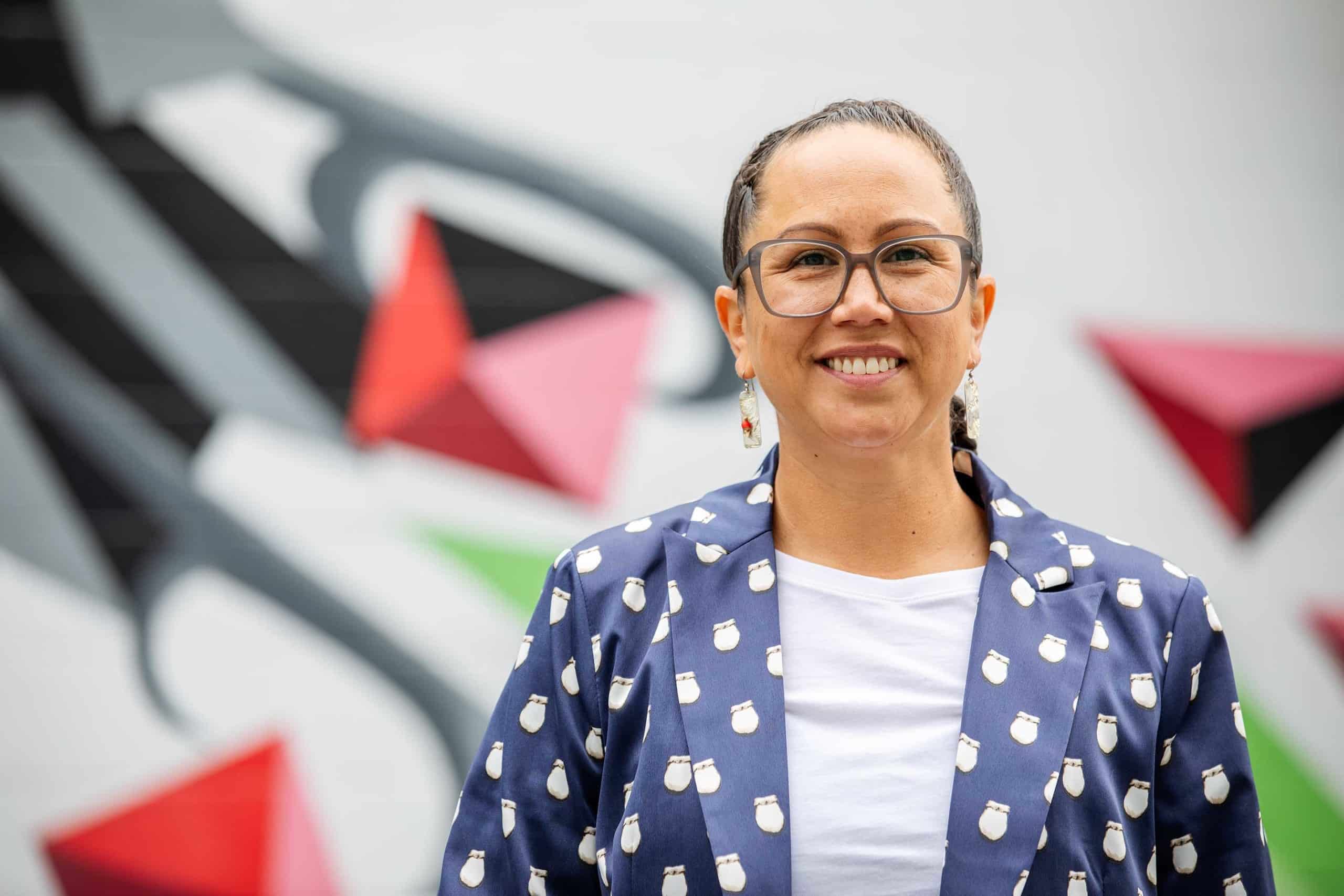
A group of painters are finding new and innovative ways to express themselves, while also staying true to where they’re from, the stories of their Elders, and Indigenous design principles.
True to Place: stímetstexw tel xéltel, is on display at the Bill Reid Gallery in “Vancouver” until March 19, 2023. Through this exhibit, guest curator Carrielynn Victor uplifts ten contemporary artists who work with new technology and materials while staying firmly connected to Indigenous design principles, teachings, and place.
“True to Place is inspired by the ways of knowing, interconnectivity, [and] relationships between the artists and where they are from or where they are,” said Victor. “The exhibit’s subtitle is about using the tools of the day in the best way possible.”
Victor, who lives in Cheam, is of the Cheam First Nation and has family connections in Stz’uminus, Qualicum and Squamish. Her artwork incorporates historical and contemporary Coast Salish designs through murals, canvas paintings, children’s books and more.
The artists featured in the exhibit are influenced by their community, culture, ways of being, and where they are.
“When an artist is being responsible in my eyes, they’re being purposeful. In this case, in this exhibit, we’re seeing a little bit of a closer connection to one’s own history,” Victor said. “As much as it’s art, a lot of our people up and down the coast didn’t have a word for art. There was a sense of when and how designs were used. It was very purposeful.”
“We aren’t the ones who are to be changing the stories that our Elders share with us or our ancestors. It’s our responsibility to carry them forward accurately and fulsomely, with the same intent they were given to us with. That’s the responsibility.”
Respecting digital artwork
Walking through the exhibit, visitors see a variety of paintings and digital displays hanging on the walls. Victor took IndigiNews on a tour of the exhibit. Pointing to a computer screen that rotates through several pieces of digital artwork, Victor said she wants to see this kind of work given the same respect as physical paintings and sculptures.
“The digital pencil is not given the same respect that a graphite pencil might be given,” she said.
The digital pieces carry the theme of the cultural value of oral history and Indigenous art principles while also engaging new styles, tools, and practices, and were created by artists who also do canvas and sculpture work.
“People might assume that if you’re using a digital platform, it’s doing the work for you or taking some spiritual element away from what you’ve produced. I don’t want to argue that point, but I do want to show that there are [emotionally] touching and moving pieces they’ve produced by hand in a digital format,” Victor said.
The exhibit features a diverse crowd of artists, ranging in age and experience.
One of the emerging artists is Atheana Picha, from the Kwantlen First Nation, whose acrylic on canvas painting features red ochre colours.
“The red ochre color [is] very significant to peoples on the north west coast for various reasons, but in direct relation to the land,” Victor said.
Picha’s painting, Sturgeon (Healer), features the large fish in an arc shape and is accompanied by an artist’s statement that explains the significance of the fish, which can live for up to 100 years.
“My relatives call them the ‘Elders of the River,’ and coming from a river nation, I think it is important to honour sturgeon,” it reads.
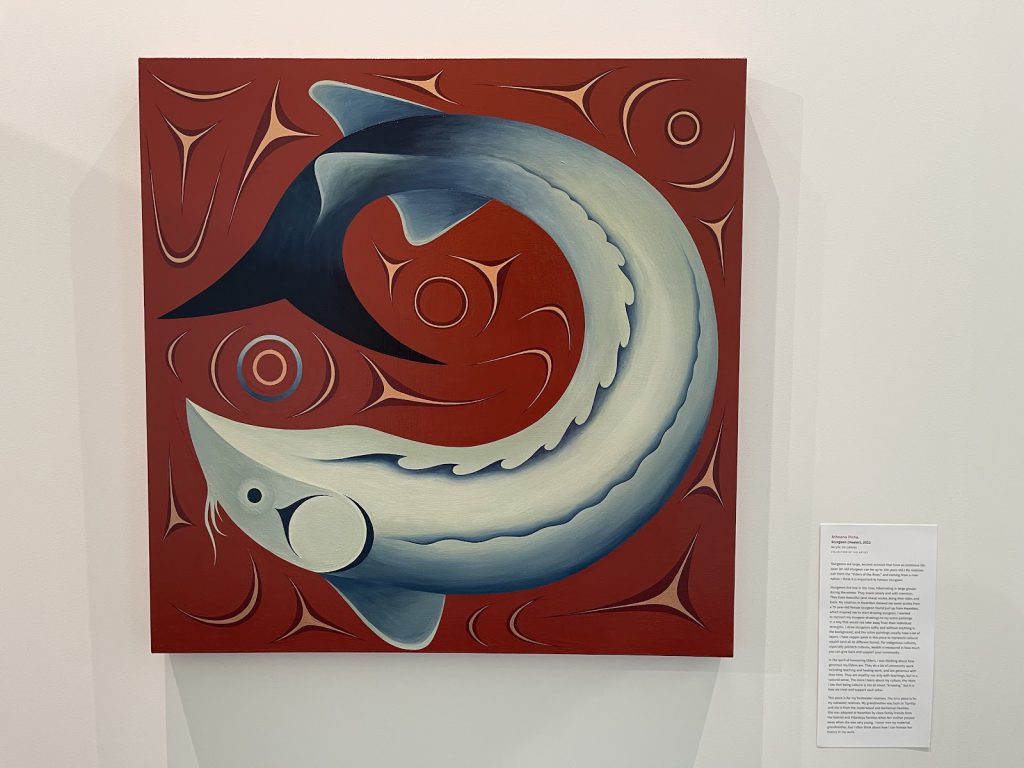
Recognizing mentors
Robert Davidson, a Haida artist for more than 50 years, also has work displayed in the show. His work, Victor said, helped pave the way for contemporary Indigenous art.
The show also touches on the significance of mentorship. Artist Crystal Worl, who is Tlingit from the Chilkat region in “Alaska,” is another featured artist. She trained with Davidson in a three-year apprenticeship.
“Viewers who look at the two [artist’s] works will see elements of Robert’s influence, and I think she’s allowing that on purpose,” she said.
“Artists can easily take a concept and not credit the ones who birthed that process or style. What we see here is a mentor [and] mentee relationship and its reflection. It’s a nod to an Elder and youth society, and I love that.”
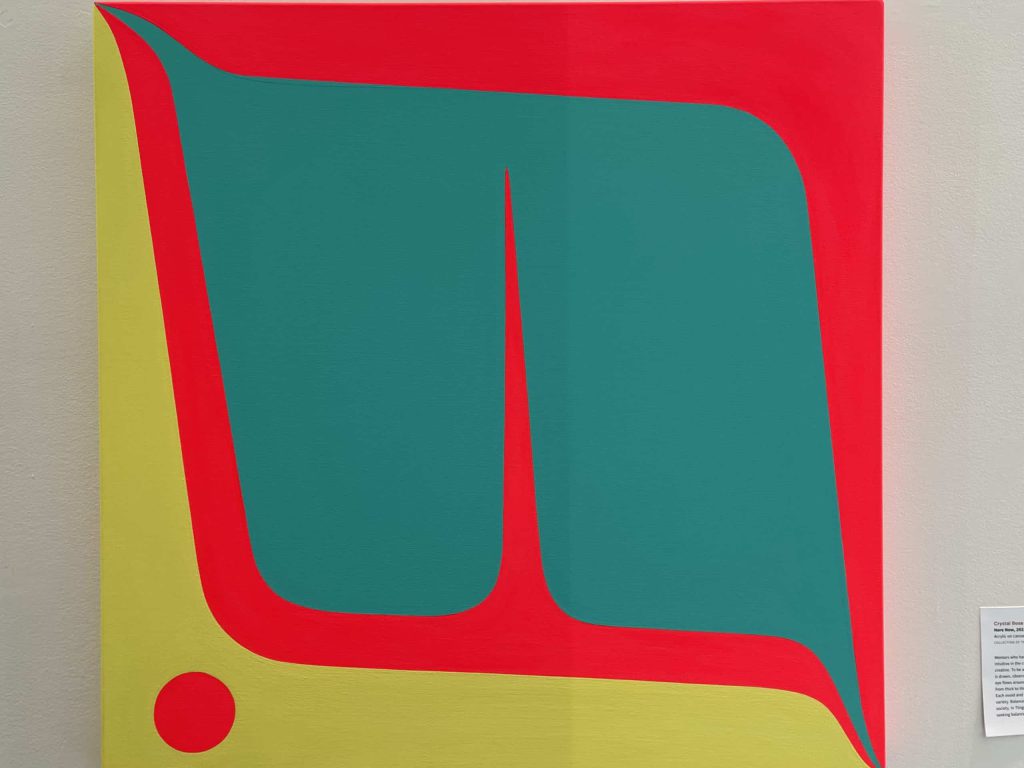

The exhibit also features a timelapse video of Luke Parnell, a Northern Carver of Nisga’a and Haida descent, and Corey Bulpitt of the Haida Nation, as they work, providing viewers with an example of how digital tools like cameras can enhance the viewer’s understanding of a piece.
“I’m excited by process. I think it’s important to occasionally lift the veil and let viewers know what it takes to get the final product,” Victor said.
“I want to show the tools and mess artists make along the way. Not everybody is willing to show that, it’s a bit of a vulnerable space … I am really grateful that Luke and Corey would share that and allow us to take a video of their process.”
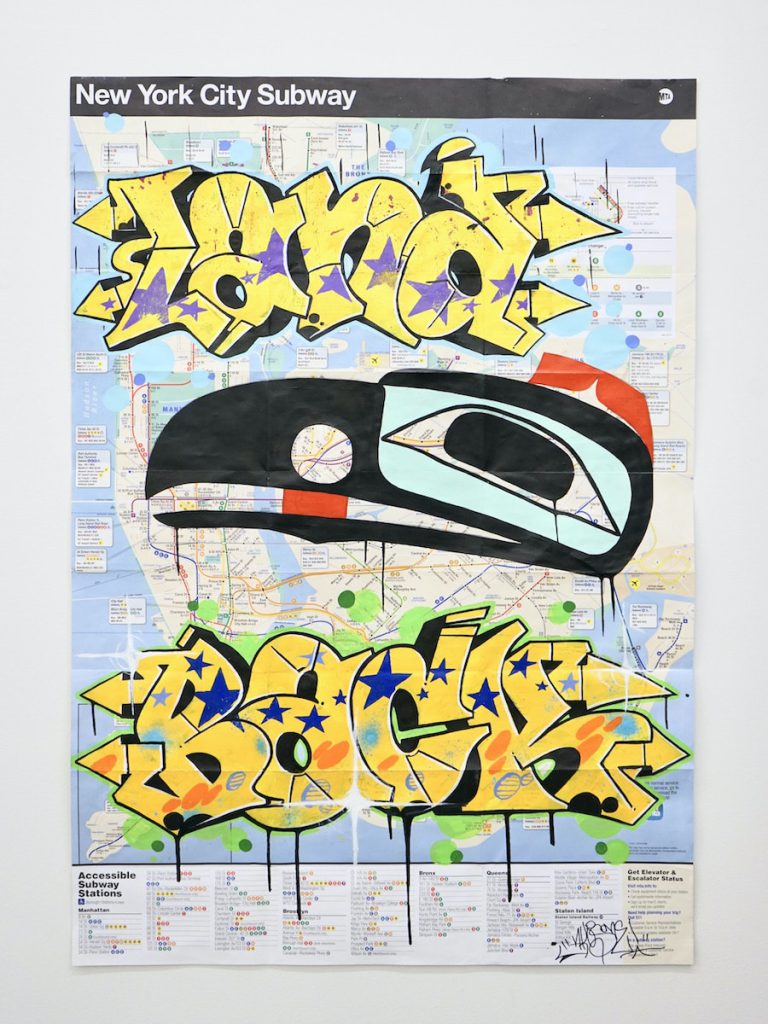
Author
Latest Stories
-
‘Bring her home’: How Buffalo Woman was identified as Ashlee Shingoose
The Anishininew mother as been missing since 2022 — now, her family is one step closer to bringing her home as the Province of Manitoba vows to search for her
-
Will you help us tend to the fire?
IndigiNews is launching a fundraising campaign to support our storytelling into 2026



